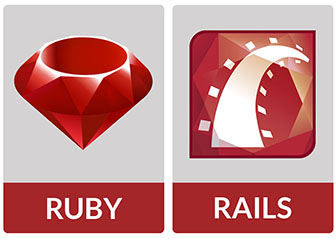
In this tutorial, we will show you how to install Ruby on Rails on your Debian 9. For those of you who didn’t know, For those of you who didn’t know, Ruby on Rails (RoR) is a framework written in the Ruby programming language that allows you to use Ruby in combination with HTML, CSS, and similar programming languages. It is used by many developers since it makes application development very simple.
This article assumes you have at least basic knowledge of Linux, know how to use the shell, and most importantly, you host your site on your own VPS. The installation is quite simple and assumes you are running in the root account, if not you may need to add ‘sudo‘ to the commands to get root privileges. I will show you the step-by-step installation of Ruby on Rails on a Debian 9 (Stretch) server.
Prerequisites
- A server running one of the following operating systems: Debian 9 (Stretch).
- It’s recommended that you use a fresh OS install to prevent any potential issues.
- SSH access to the server (or just open Terminal if you’re on a desktop).
- A
non-root sudo useror access to theroot user. We recommend acting as anon-root sudo user, however, as you can harm your system if you’re not careful when acting as the root.
Install Ruby on Rails on Debian 9 Stretch
Step 1. Before we install any software, it’s important to make sure your system is up to date by running the following apt-get commands in the terminal:
apt-get update apt-get upgrade
Step 2. Installing RVM.
One way of installing Ruby on Rails on a VPS is by using the Ruby enVironment Manager, or shortly RVM. We will use RVM to install Ruby on Rails in this tutorial. In order to install RVM on your server, you can use the following commands:
apt-get install curl gnupg2 dirmngr gpg --keyserver hkp://keys.gnupg.net --recv-keys 409B6B1796C275462A1703113804BB82D39DC0E3
Use curl the command to install RVM:
curl -sSL https://get.rvm.io | bash -s stable
Load RVM environment variables using the below command:
source /etc/profile.d/rvm.sh
Step 3. Installing Ruby.
Run the following command to get a list of ruby versions available for your system:
rvm list known
The list result should look like the following one:
# MRI Rubies [ruby-] 1.8.6 [-p420] [ruby-] 1.8.7 [-head] # security released on head [ruby-] 1.9.1 [-p431] [ruby-] 1.9.2 [-p330] [ruby-] 1.9.3 [-p551] [ruby-] 2.0.0 [-p648] [ruby-] 2.1 [.8] [ruby-] 2.2 [.4] [ruby-] 2.3 [.0] [ruby-] 2.4 [.1] [ruby-] 2.2-head ruby-head ...
Use the following command to install Ruby 2.4.1:
rvm install 2.4.1
If you want to make that version the default, add that at the end:
rvm use 2.4.1 --default
Step 4. Installing Rails.
Now that RVM is installed and configured and Ruby is on the system, you can install Rails. Rails are available as a Gem, which is a Ruby package. When Ruby is installed, its native Gem packaging system is also installed. Installing Ruby packages is very similar to any Linux package manager. To install Rails you can use the command below:
gem install rails
Check rails version:
rails -v
Sample output:
# rails -v Rails 5.1.4
Now you are ready to start with your first Ruby on Rails project. Create a new Ruby on Rails application in your home directory:
cd ~ rails new idrootApps
This should take no longer than a minute. Once your new Ruby on Rails application is created, you can start developing the application. There are new guides for Rails 5.0 which will help you understand how all of the pieces fit together.
Congratulations! You have successfully installed Ruby on Rails. Thanks for using this tutorial for installing the latest version of Ruby on Rails on the Debian 9 Stretch server. For additional help or useful information, we recommend you to check the official Ruby on Rails website.